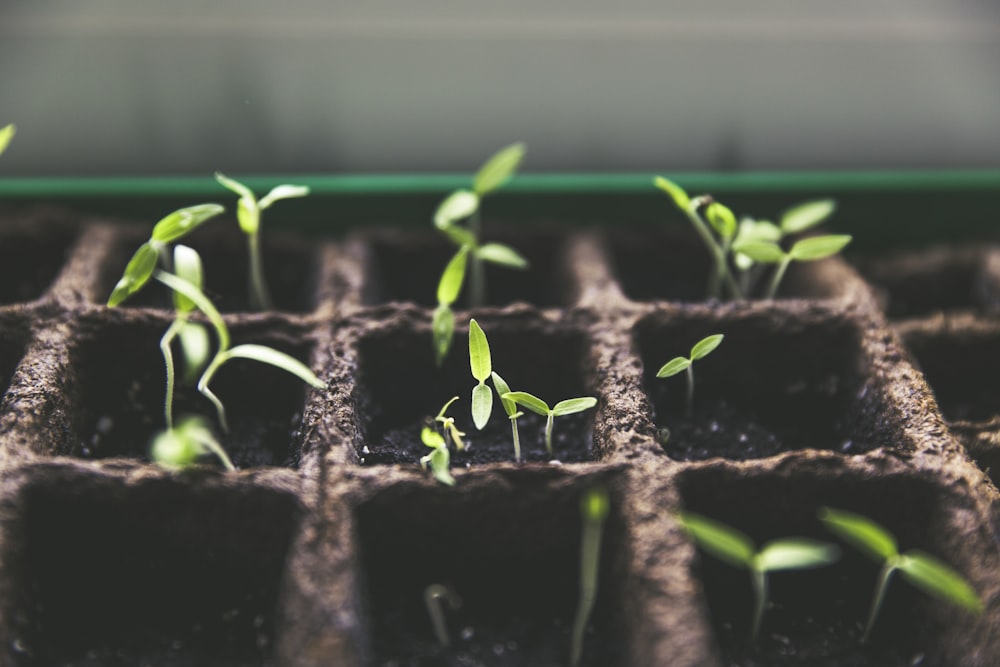 Photo by Markus Spiske on Unsplash
Photo by Markus Spiske on Unsplash
Homemade food is the tastiest! Nothing is tastier than a pasta sauce made from fresh homemade tomatoes or homemade apple pie. Simply, homemade food smells better and is tastier than the one bought in the store.
Growing your own vegetables, fruits, or herbs allows you to harvest when the food is at its very best. At the same time, producing your own food is a healthy way to save money and enjoy fresh food.
Nowadays, more and more people are choosing to grow their food. According to one survey, six in ten respondents said that a rise in food prices meant they were trying to be more economical by growing their own, with two in ten saying they had less disposable income to spend on food. The rest (33%) are trying to eat more healthily. So, growing your own food – does it save you money? Let’s find out.
First - is it legal?
Well, some people may be concerned about whether or not it is legal to grow food. Growing vegetables, fruits, or spices are generally allowed, but some countries have their laws or prohibitions, so it is important to be informed. In many cases, it’s not about law, it’s about the restriction on height or a requirement to have some grass as well as vegetables.
As reported by CNN, a law was finally passed that allows Floridians to grow their own food on their front lawns. So, as of July 2020, residents of Florida have the right to grow their own food in their front yards. On the other side, growing your food in California may be a little complicated.
The California Homegrown Food Act states that 'zoning regulations may not prohibit the cultivation of food plants in front or back yards for personal use.' Also, gardeners may face restrictions to the individual plant growing structure or 'plant material' heights.
What do the numbers say?
Well, it is far more cost-effective growing your tomatoes than buying tomatoes for $4 per pound at the grocery store. According to research, in the capital cities, it costs at least $8-17.50 per kilogram or more if you are buying organic!
For producing lettuce the input costs are minimal and the seeds may cost about $4-$5 for a packet of 250. On the other side, you will pay $3 for two at the grocery store. Of course, the numbers depend on the size of the yard, the investment, the type of plant you want to grow, etc.
What are the expenses?
The total cost depends mostly on what you want to grow, but also the number of plants purchased, and the length of a growing season. Before you start growing your food, you must calculate and consider the following: cost of seeds, cost of dirt, fertilizer, plant protection, cages, fences, water, tools, accessories, and more.
Learn more about the least cost-effective.
It is not easy or profitable to grow bananas or lemons at home, especially if the climate is not suitable for these plants. First, you must learn more about the least cost-effective plants. Some of the plants that have proven to be unprofitable are potato, banana, asparagus, green cabbage, bean, celery, etc.
 Photo by Elaine Casap on Unsplash
Photo by Elaine Casap on Unsplash
Select vegetables that are expensive to buy in the grocery store.
Now that you have learned more about plants that are not profitable, consider the ones that are most expensive in stores. Are they worth growing? It usually goes like this: to earn (save) money – grow expensive. Vegetables such as tomatoes or melons could be a great option. You can also pick cucumbers, carrots, herbs, onions, or lettuce.
Herbs are the best.
Honestly, you can't go wrong with growing herbs. You know how all famous chefs always have fresh spices in their kitchen? It is because they grow herbs. Most herbs are easy to grow and will grow nice even in the smallest apartment, which is great! With herbs, you are not limited by space.
Also, the quality of herbs freshly picked from your garden is vastly superior to those bought at the grocery store. Some of the recommended herbs are mint, rosemary, basil, thyme, and parsley. This is a great way to save money as fresh herbs can be expensive.
You can do gardening in every space and also dirt-free.
If you want an easy and effective way to grow your own fruits, vegetables, or herbs at home but you don’t have much space, don’t worry! Grow Pad Mini is the perfect gadget for you. What’s amazing about hydroponic plant growing, is that they can mature 25% faster than those grown in soil, so with Grow Mini Pad, you’ll be able to harvest after 6 weeks of planting and continue harvesting for up to 6 months!
Also, the dirt-free quality substrate holds your seed. The Grow Pad Mini includes a smart 12hr hour cycle LED light that provides all the sunshine your herbs need. All you need to do is pour in some water and watch your herbs grow. Simply connect your device to a power source, place the pot on the base, and add the substrate into the pot. Add a couple of seeds onto the substrate and add clean, filtered water!
No more worries about the weather, or the risks, your food will grow safely. Besides, you can plant herbs or vegetables anytime and anywhere, even in your living room. You can learn more about seeds and the Pad itself here.
Hurry up and get it at amazing value along with more cool gadgets in the BREO spring subscription 2022 box.
Take care of your health – it is not all about money.
Producing and eating your own food, vegetables, fruit, or herbs is a lot healthier than buying and eating those from the supermarket. When it comes to your food, you will be sure that it is fresh and healthy, containing maximum vitamins, minerals, and nutritional value. You will know exactly what goes into the food you grow yourself which means fewer chemicals will get inside your body.
If you’re a total beginner or simply have a small apartment, Grow Pad Mini is the perfect way for growing food for you! Find more in the BREO subscription box.

 Photo by
Photo by 
Leave a comment